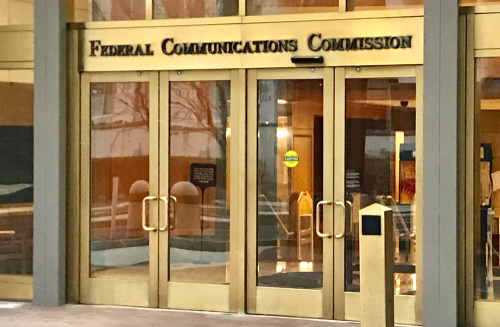FCC gives utilities, other industries green light to deploy broadband in 900 MHz band

A portion of the 900 megahertz (MHz) band, which is currently designated for narrowband land mobile radio communications and primarily used by utility, transportation, manufacturing, and petrochemical companies, will now be available to those industries to develop and deploy critical wireless broadband technologies and services.
The Federal Communications Commission (FCC) on Wednesday voted to make 6 MHz of low-band spectrum available for broadband licenses on a county-by-county basis while reserving the remaining 4 MHz of spectrum for continued narrowband operations.
“The @FCC appropriately balanced the need for new broadband spectrum while protecting incumbent licensees, including electric companies,” tweeted Philip Moeller, executive vice president of the Business Operations Group and regulatory affairs at the Edison Electric Institute (EEI), which represents the nation’s investor-owned utilities.
“This will enhance energy grid security & resiliency while protecting the existing complex systems that support mission-critical operations,” Moeller tweeted on May 13.
Specifically, the FCC said it approved a Report and Order, an Order of Proposed Modification, and two Orders that realign the band and establish a transition mechanism based primarily on negotiations between prospective broadband licensees and existing narrowband incumbent licensees.
“The transition will enable next-generation, mission-critical applications not available via current narrowband systems and help meet the evolving technological needs of industries that provide crucial services to the American public,” according to the commission’s statement.
“Ameren could not be more pleased that the chairman and the other commissioners have paved the way for this company to deploy a smarter, stronger and more secure communications network with far greater bandwidth,” said John Hughes, director of network engineering for power company Ameren Corp. “We thank the FCC for all its hard work in crafting a decision that will support a future where broadband plays a key role in the control and management of our network, thereby allowing us to provide enhanced service to our customers.”
The FCC’s item also establishes rules to prevent broadband applicants from receiving windfalls and includes application requirements and operating and technical rules applicable to the new 900 MHz broadband licenses.
“This order comes at a vital time, as industry demand for private LTE networks is growing but low-band spectrum options to serve these critical needs are scarce,” said Rob Schwartz, president of the publicly traded Anterix, the largest holder of licensed spectrum in the 900 MHz band.
Schwartz said the new private LTE networks will offer opportunities for critical infrastructure and enterprise customers “to bolster efficiency, resiliency and cybersecurity, and we’re gratified the FCC had the foresight to move forward and recognize the transformative power of broadband.”
In commending the FCC’s action, Southern Linc Director of Legal and External Affairs Michael Rosenthal also lauded the tremendous benefits that LTE technology can bring to the electricity sector of the economy.
“LTE can support grid modernization, the integration of renewable energy sources, enhanced cybersecurity, and other innovations,” Rosenthal said. “Expanding the private LTE ecosystem will lead to reduced equipment costs and a growing portfolio of technology choices for this essential segment of America’s infrastructure.”
In addition, the FCC’s item will modify the Association of American Railroads’ existing nationwide ribbon license in the 900 MHz band to facilitate the transition of the band without disruptions to railroads’ operations and to enable significant railroad safety upgrades.
And as part of today’s action, the FCC also announced a partial lifting of the 900 MHz application freeze to permit existing licensees to file applications to relocate their narrowband operations as part of a transition plan.
